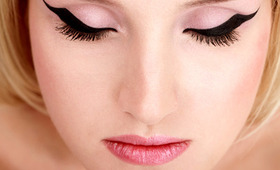Welcome to Sonia’s Fude Corner! Brush designer Sonia G. is here to share expertise and knowledge about handcrafted Fude, along with tips, techniques, and advice to make the most out of your makeup brushes. Sign up here to get notified about Sonia’s newest articles.
Makeup brushes are an investment and if we take care of them, they can last a very long time. So, what can we do to make them last as long as possible? Knowledge is power. Here’s how a brush can get damaged so that you can make the appropriate decisions regarding the products you use with your brushes.
Brush Anatomy 101:
On the bristle part, we have the heel (next to the ferrule), the belly in the center and the tip (or point or toe) at the very top.
It’s All About the Ferrule and Glue
On most brushes, the bristles are connected to the handle by way of the ferrule in between. The bristles are attached and glued inside the ferrule. Not all brushes are built the same way. The manufacturer’s techniques to attach the bristles will differ based on their own legacy.
The most delicate parts of the brush are the bristles and just under the heel, where the glue is located. If excessive pressure is put on the bristles, either the bristles break or the glue weakens, and the brush will start to shed.
Be Aware of Your Products
Using the wrong product with the wrong brushes can lead to shedding and breakage. For example, the application of liquid products often requires a stronger (denser, firmer) brush to pick up and blend the product. When we apply pressure on the tip of a brush, either against a product or against the skin, some brushes will withstand the pressure better than others. Excessive pressure and aggressive movements are inevitably going to cause breakage.
So keep in mind when applying liquids or creams: if the bristles are bending too much, or if you have to aggressively rub them in order to get something done, then it’s time to switch brushes.
Washing May Cause Damage
Using cream and liquid products also require us to wash our brushes more frequently. When we wash our brushes, we must also be careful not to apply too much pressure on a brush that has not fully dried, as it can alter the stability of the glue area. The glue area needs to be fully dried before we use the brush again.
For that reason, I would not recommend delicate bristles, like saikoho goat, for liquids and creams, even if they are dense and appear to work well with those formulas.
I prefer to reserve my full natural brushes for the use of powders, and use a mix of natural and synthetic bristles with the creams and liquids. That’s the reason why I designed the Fusion eye and face brushes as they can better withstand the pressure required to work with creams, while still having some natural bristles to help with the blending.
If you are interested in learning more about how to determine if a brush can be used with creams and liquids, please read this article where I go into more detail.
Featured Products
You Might Also Like
-

Wellness
Five Memory-Boosting Foods
- 844
-

Expert Advice
What's Your Winter Scent?
- 77
-

Expert Advice
Which Nude Is Right for You?
- 432
-

Makeup Brushes
Which Eye Liner Brush Is Right for You?
- 1920
-

Tools & Brushes
How to Use Makeup Brushes with Liquids/Creams and Not Destroy Them
- 16
-

Makeup & Travel Bags
Travel Light, Travel Luxe!
- 904










